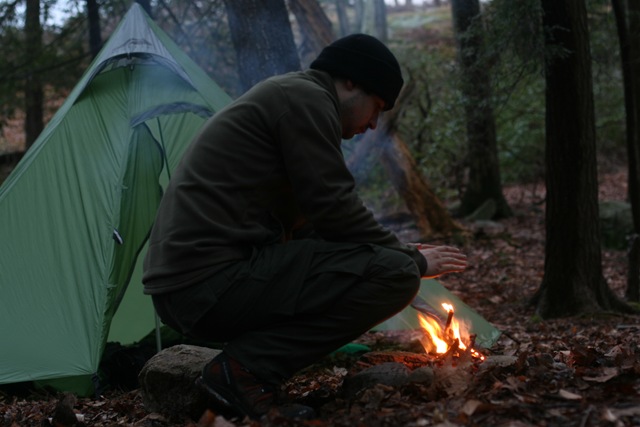Here is Nansen's description of the clothing worn in his book Across Greenland:
“With the exception of two tunics of reindeer skin...and a little coat lined with squirrel skin, which I took but rarely wore, we had no furs, but wore woolen things throughout. Next to our skin we had thin woolen shirts and drawers, then thick, rough jerseys, and then our outer garments, which consisted of a short coat, knickerbockers, and gaiters...In wind, snow, and rain, we generally wore outside our other clothes a light suit of some thin, brown, canvas like stuff. This was reputed completely waterproof, but it turned out to be nothing of the kind. In wind and snow however, it did excellent service.”
[FONT=Arial, Tahoma, Helvetica, FreeSans, sans-serif]
[/FONT]The description of the material sounds identical to Ventile. I'm sure we can call it other names, but at the end of the day it is tightly woven cotton.
As far as personal experience, I find Ventile and other cotton top layers to be the lowest return for the value ($) from the materials we have on the market today. It provides good wind protection and is durable, but I find it not to be practical for any long distance backwoods travel. It does not offer sufficient rain protection, so you are forced to carry other rain protection anyway. It is breathable when dry, but when wet is as breathable as a plastic bag-the time when you presumably need it the most. My biggest problem however is that assuming you are not just out for a walk in the woods, you will have to remove those top layers for most of the trip. When hiking and climbing, I am almost down to my base layers. This means that all the other clothing has to go in my pack. The size and weight of Ventile, or whatever the permutation of the day happens to be is just too heavy and hard to compact to be comfortably carried. I find that a wool shirt offers sufficient wind protection so that a cotton cover is not required, and for when there is rain or snow, I have a very light, highly compactable synthetic shell. It spends most of the time in my backpack, and I paid $45 for both the jacket and the pants. I know, I know, the fire will get you if you are not wearing wool or cotton. That has not been my experience. Here I am wearing fleece next to the fire:

Plenty of sparks landed on me, none of them melted my clothing.
My point is, Ventile, Gaberdine, etc, (Scott called it Burberry) is one of the most overpriced materials on the market. If you are paying $300 for a piece of clothing, there is a wide range of options. In some very limited circumstances, Ventile might be a great choice, for the rest though...
But, ultimately, I doubt any of this will matter. We wear what we wear for numerous reasons, performance is usually not on top of the list. This is just my opinion anyway. As far as first hand sources, Scott's journals also have a few references about this tightly woven cotton material, but I'm having a hard time finding them right now.


 Hmmm. Could have been ventile if ventile had been invented. Egyptian cotton certainly comes close. Or it could have been drill or twist, sheeting, Palina cloth, Suma Cloth, Poplin, element cloth, balloon silk, or dry jean. All of these materials have been used in the past for tents and clothing and meet the description above. Tightly woven cotton is not very specific. The length of the cotton strands also makes a huge difference in performance. To call all "tightly woven cotton" material ventile is not even close to reality and is a poor argument to say the least. But you can spin it whatever way you want I reckon if it helps you "win" your argument. This is the internet after all. Put it in a blog, post it on a forum, make a video and put it on ewetoob and it becomes "truth."
Hmmm. Could have been ventile if ventile had been invented. Egyptian cotton certainly comes close. Or it could have been drill or twist, sheeting, Palina cloth, Suma Cloth, Poplin, element cloth, balloon silk, or dry jean. All of these materials have been used in the past for tents and clothing and meet the description above. Tightly woven cotton is not very specific. The length of the cotton strands also makes a huge difference in performance. To call all "tightly woven cotton" material ventile is not even close to reality and is a poor argument to say the least. But you can spin it whatever way you want I reckon if it helps you "win" your argument. This is the internet after all. Put it in a blog, post it on a forum, make a video and put it on ewetoob and it becomes "truth."